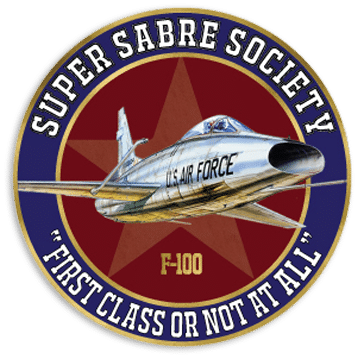“1Lt Austin P. Snyder, 113 TACTICAL FIGHTER SQ., HULMAN FIELD, TERRE HAUTE, IND
On 14 January 1966, 1st Lt Austin P. Snyder was flying a local night instrument mission in a unit equipped F-84F. He climbed to 20,000 feet and received permission from Approach Control to execute a VFR practice ADF penetration and approach to runway 23. As he was inbound to high station, he noted a C-130 beginning an ADF penetration. On the ADF low approach Lt Snyder passed ahead of the C-130 and shortly thereafter executed a missed approach.
At this time Lt Snyder proceeded to a point approximately 15 miles south of the field and started a climb to 20,000 feet to practice a VFR TACAN penetration and approach. At 12,000 feet, the cockpit lights dimmed twice and the generator failed.
Lt Snyder took out his flashlight, placed it between his knees, and used it to complete his emergency procedures and maintain control of the aircraft. He turned in the general direction of the field but haze layers prevented its location. At this point, without the use of navigational aids, due to complete electrical failure, and unable, because of the haze, to find the runway, he remembered the C- 130 which he had previously passed and realized that if he could again locate the transport it would be his ticket to final approach and a safe landing.
Fortunately, the C-130 driver had decided to shoot another approach. Picking up its rotating beacon, Lt Snyder was able to follow the transport in on low approach and, finally seeing the runway lights, was able to land.
A successful landing, without engaging the barrier, was accomplished without the use of trim, flaps, speed brakes, or drag chute. Lt Snyder’s ingenuity, professionalism and outstanding performance no doubt averted a serious accident. WELL DONE!” (1)
Source: (1) https://www.safety.af.mil/Portals/71/documents/Magazines/FSM/1960s/196612%20-%20AerospaceSafety.pdf


